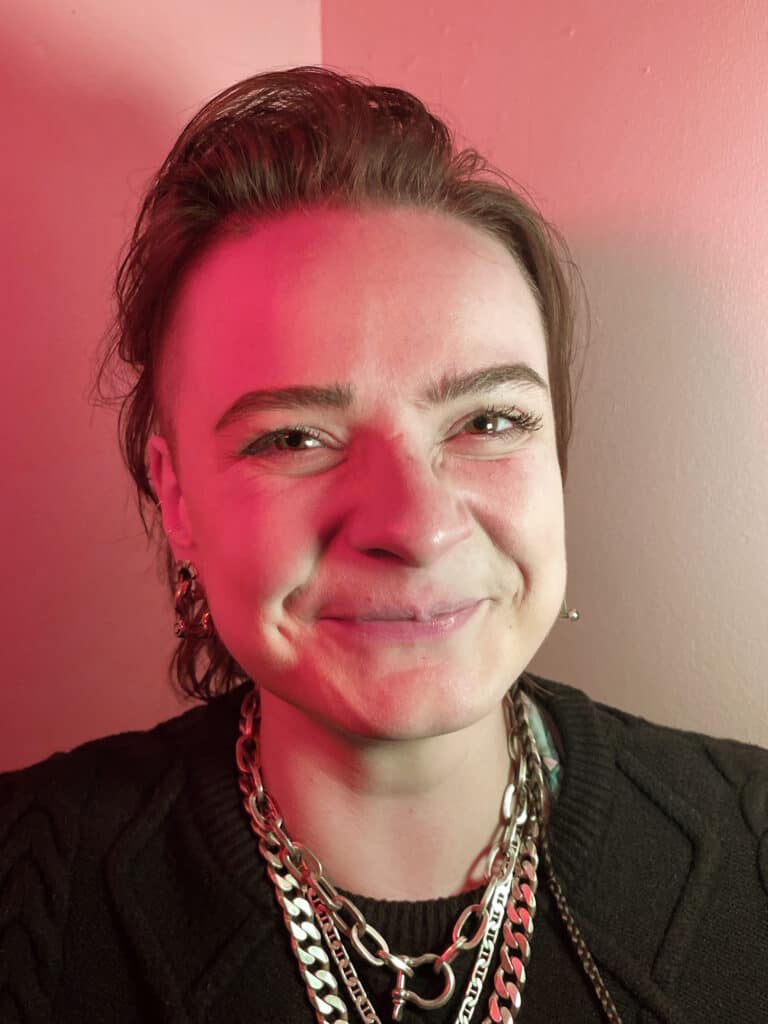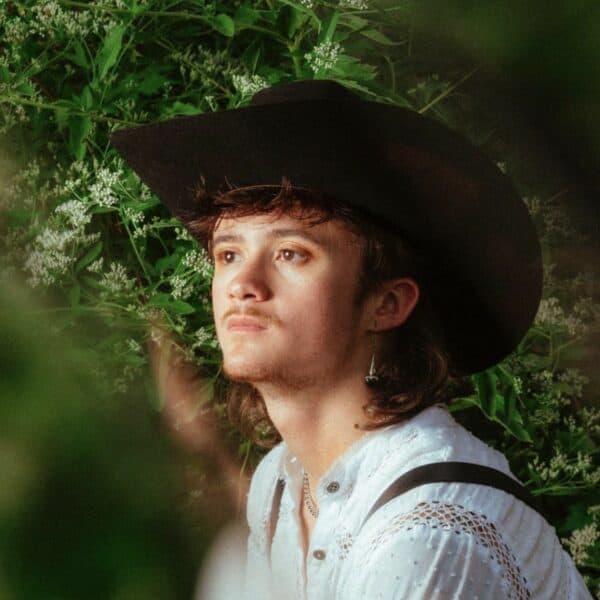by Mud | photos by Jackson McMinn & Moth Moth Moth
Memphis-based artist Iza Bateman has been focusing on material manipulation from an early age. They have been endlessly fascinated by the objects around them, and the ways in which those objects are molded through time. Experiencing extreme brain trauma at the age of three caused them to grow up with many learning disabilities. Their early years were spent in isolation, being homeschooled in Byhalia, Mississippi, until attending Memphis College of Art in 2013 for their BFA. These circumstances growing up allowed them the time to explore mediums in lengths not allotted to most. Their fascination grew, to the amusement and horror of those they knew, as they took every small rock, metal object, piece of wood, etc. to either display as-is or to take toothpaste and rags to them until the desired appearance and texture was accomplished.
Experiencing and living with these oddities, as well as completing undergraduate and graduate study, has served as fuel to Iza’s passion for understanding the human mind’s way of relating and viewing objects. From the wear on amusement park handrails to the reasons to look at something twice, they aim to always explore and understand what causes the simple to be significant.
Iza has now received her MFA in Sculpture and is currently a part-time instructor at The University of Memphis.
Mud: How would you explain your craft?
Iza: I’m a pretty process-heavy person. Sometimes that can look like following every classical rule around a medium or throwing it all away. I used to lean pretty heavily into the formal side of my craft and found it incredibly frustrating when I couldn’t get things “perfect”. Oftentimes those issues fell in line with my disabilities and I would try my best to wing-it in a way that didn’t show how I was struggling. Specifically with numbers. I realized somewhere along the way that the wingingit part was incredibly fun to me. It’s like a puzzle and the answer is when the pieces fit even though I didn’t measure a thing. Sure, it takes longer, but I do like harder not smarter when it comes to my work in some ways.
For instance, utilitarian ornate metal work is often covered in a clear coat to keep the metals from tarnishing/oxidizing. While it has a place, it’s always driven me nuts. So I sand away whatever protective coating that may be. It would be way less work to use some chemical to strip it but sanding is something I have come to adore. That’s a part of my process and my craft.
You work in various mediums, do you have one that feels integral to your being?
Definitely, I grew up following my dad around, bless his patience, while he was working on our house or fixing things. One of the first mediums I remember him teaching me was woodworking. Being so young, that mostly consisted of sanding things. Little did he know what he started.
Wood is so diverse as a medium. When someone says they are a woodworker, it can mean so many things. They could specialize in joinery, chipping, turning, restoring, the list goes on and on. They could work with pricey hardwoods or the fallen limbs in their backyard. All of that is to say, there are lots of things you can do with a knife and a stick.

What is your workflow?
My work usually starts off by doing a lot of sketching in my head, then putting it onto paper, then mentally throwing all of that away before I start making a piece. It’s like when giving a speech or a lecture, you may write out what you are going to say but you just use those words as a guide rather than reading exactly what you wrote.
Once I get into making whatever the sculpture may be, it becomes about the process of manipulating the material and the outcome stays sort of ambiguous until I get the answer I’m looking for.
Who or what are your biggest influences?
I came across Emily Young years ago when I was in undergrad and she has stayed pretty up there for me, specifically in relation to her process. She is a stone carver who finds a stone then designs her work around its weaknesses and her areas of interest. I work similarly when working in the subtractive.
I also have a healthy dose of love for some of the women in the YBA group, specifically Tracey Emin. In early Covid-19, I started painting. Emin’s exhibition at the White Cube, “A Fortnight of Tears”, really opened my eyes in ways that two dimensional work on a wall can be in conversation with three dimensional ones, while each still holds their own. Her journey through speaking about the “taboo” has deeply informed my work as well. Shock value is a big part of what she does. While that used to look like her famous piece, My Bed, a ready-made, now it’s changed into The Mother, a massive bronze casting.
As for what, my biggest thing would be science fiction. The way creators show the viewers things that go beyond reality without breaking the suspension of disbelief is endlessly facilitating to me.
Are you currently working on any new projects?
Can’t say much at the moment, but I am working on something pretty exciting so be on the lookout for more on that in the coming months.
Email Iza at IzaBTMN@gmail.com
Follow on Instagram @Pebble_Enthusiast



